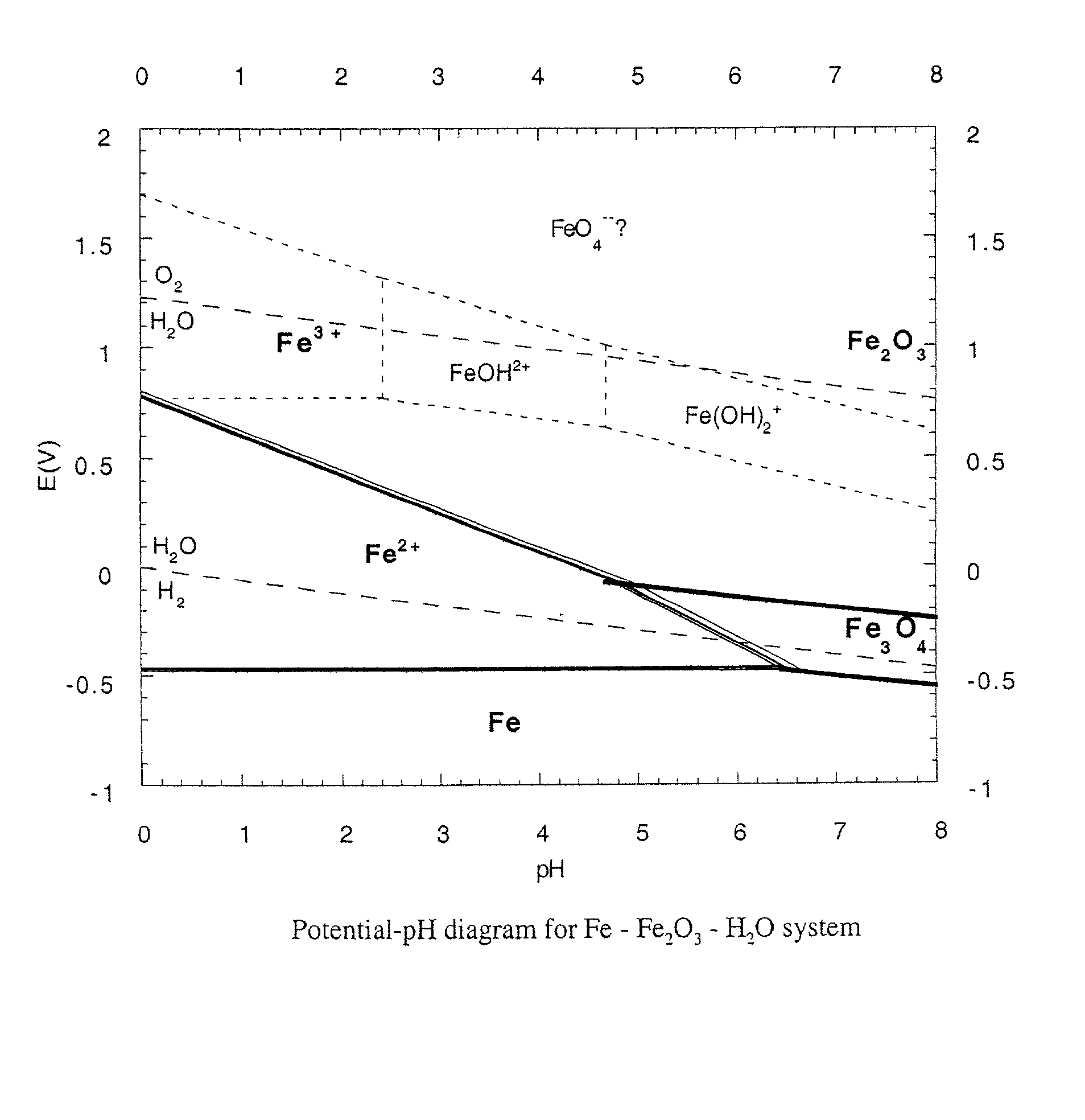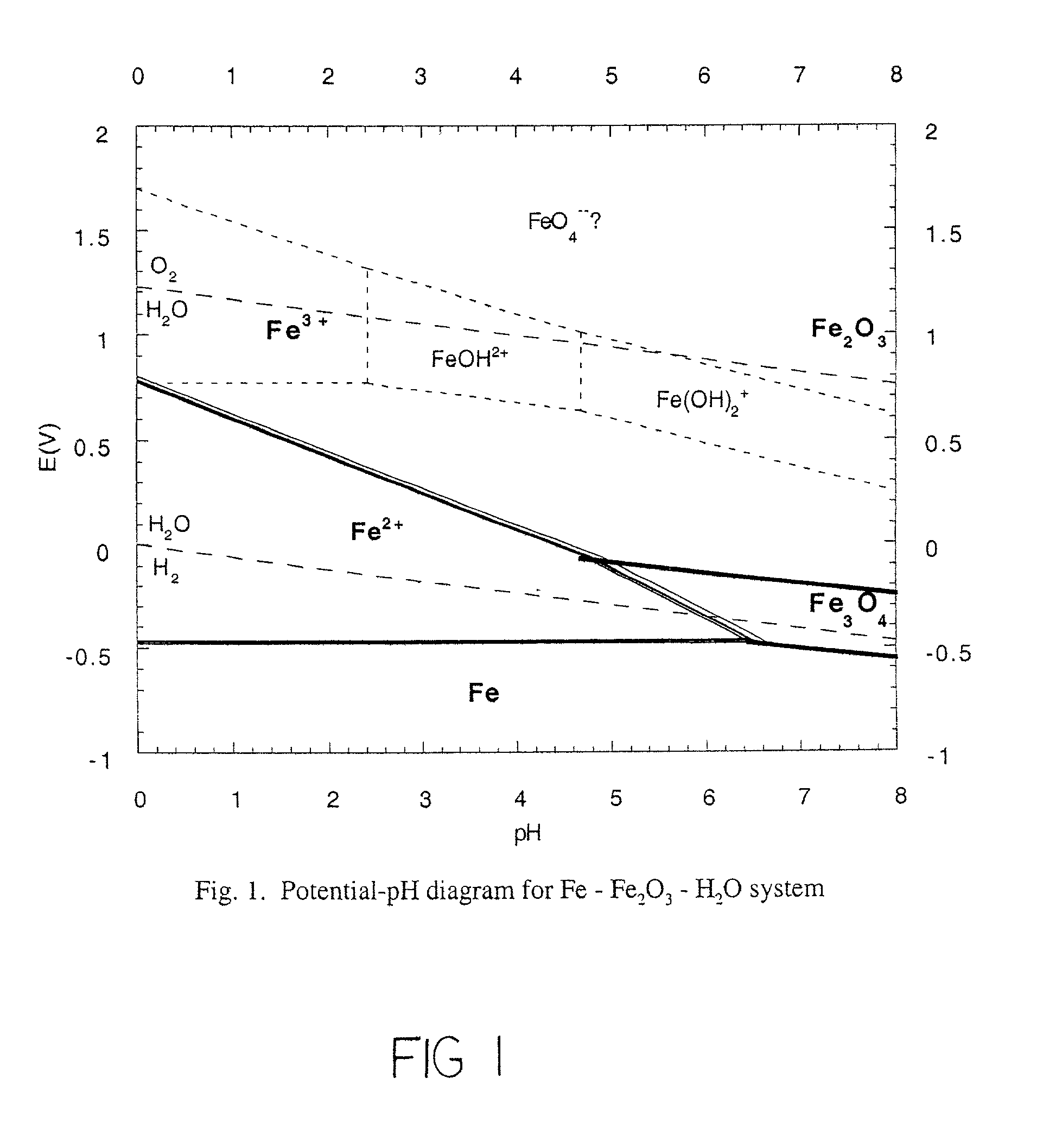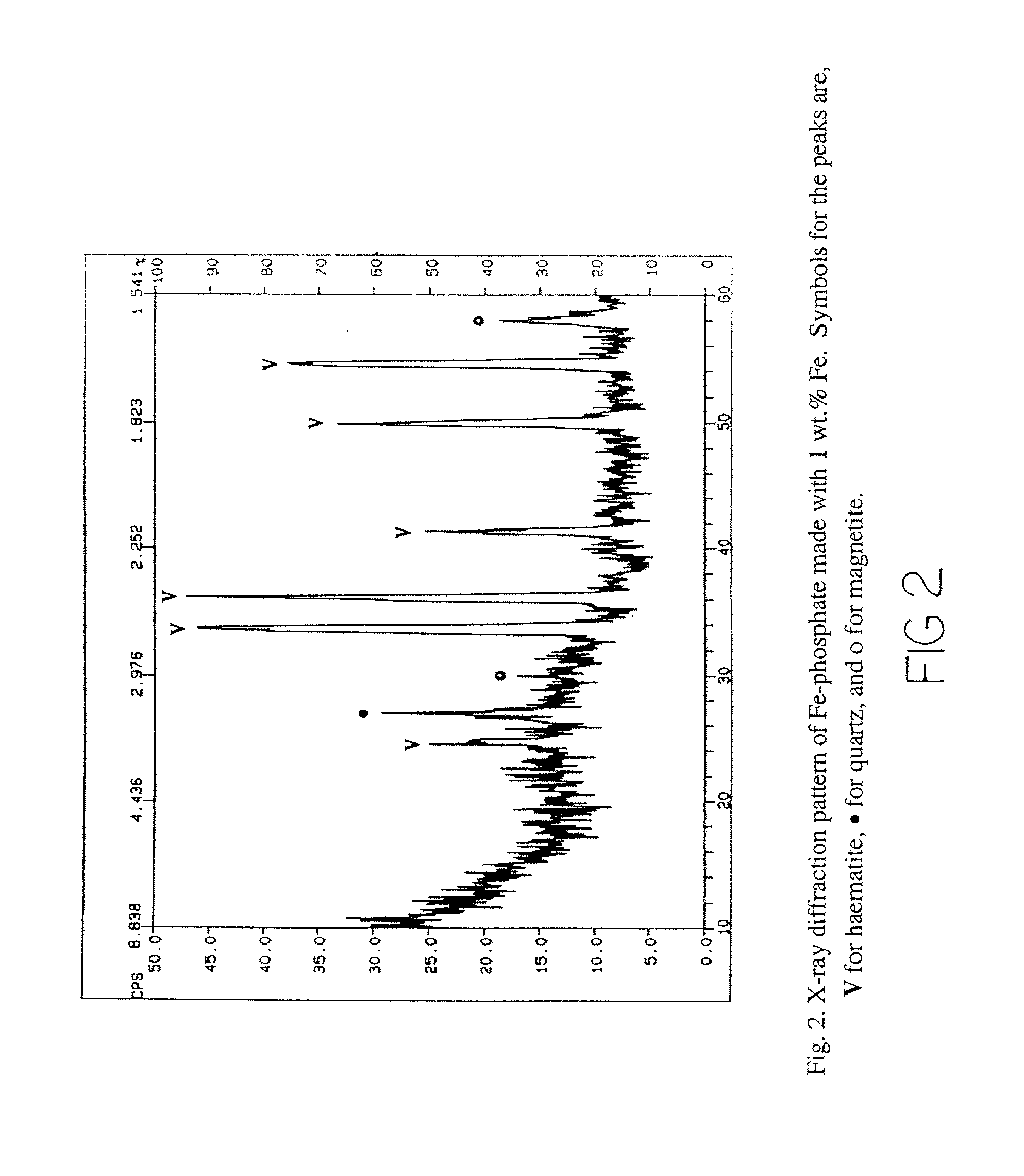Chemically bonded phosphate ceramics of trivalent oxides of iron and manganese
- Summary
- Abstract
- Description
- Claims
- Application Information
AI Technical Summary
Benefits of technology
Problems solved by technology
Method used
Image
Examples
example 2
[0031] Dye cast haematite ceramic.
[0032] Haematite was mixed thoroughly with an approximately equal weight of sand. Approximately 0.6 wt. % of iron powder were added to this mixture followed by the addition of approximately 3.5 to 4 wt. % of 85 wt. % concentrated phosphoric acid solution and 8 to 10 wt. % of water. The entire mixture was mixed for a few minutes and was then cast into a brick in a brick mold by applying a pressure of 1000 psi. When taken out of the mold, it was hard and set well after a day. The cost of the phosphoric acid in the brick was only $0.01 per pound of brick.
example 3
[0033] Red mud ceramic.
[0034] Red mud is a highly alkaline waste resulting from the Bayer process extraction of alumina from bauxite. It is rich in haematite and hence may be used as a raw material for forming iron phosphate ceramics. A red mud brick was made by dye-casting it. Sand was added to an approximately equal weight of red mud which had a water content of 30 wt. %. The red mud and sand were mixed in a mixer capable of forming a uniform consistency of moldable clay. In one instance, a table top mixture was utilized to generate a mixture having a viscosity of approximately 200 cp (centipoise). Approximately 12.5 wt. % of 85 wt. % of concentrated H.sub.3PO.sub.4 were then added. After mixing for five minutes, the pH of the resulting solution was 3.11. Approximately 0.18 wt. % of iron was then added and the entire slurry mixed for 25 minutes. A thick mass formed which was pressed at a pressure of 1000 psi in a brick mold. The resulted pressed mass hardened into a solid brick in...
example 4
[0036] Swarf ceramic.
[0037] Swarfs are machining wastes containing iron in them. In storage, they oxidize and form magnetite and haematite. While they are pyrophoric wastes and hence are a liability, they are ideal raw materials for forming iron phosphate ceramics. This is because the wastes contain a small amount of elemental iron that has not rusted, and they also contain different iron oxide forms that include haematite and magnetite.
[0038] The swarf waste utilized in this example was a fine ground black material containing traces of machining oil. This powder (comprising from 70 to 80 wt. %) was mixed with from 10 to 16 wt. % of waste phosphoric acid. Small amounts of Fe and Fe.sub.2O.sub.3 were also added to some samples. TABLE 2 gives the composition used herein in forming ceramics. In all cases, the ingredients were mixed only for a few minutes, and the mixture was transferred into a plastic mold and was pressed at 1000 psi and kept under pressure for 10 minutes. When each sa...
PUM
| Property | Measurement | Unit |
|---|---|---|
| Fraction | aaaaa | aaaaa |
| Fraction | aaaaa | aaaaa |
| Fraction | aaaaa | aaaaa |
Abstract
Description
Claims
Application Information
 Login to View More
Login to View More - R&D
- Intellectual Property
- Life Sciences
- Materials
- Tech Scout
- Unparalleled Data Quality
- Higher Quality Content
- 60% Fewer Hallucinations
Browse by: Latest US Patents, China's latest patents, Technical Efficacy Thesaurus, Application Domain, Technology Topic, Popular Technical Reports.
© 2025 PatSnap. All rights reserved.Legal|Privacy policy|Modern Slavery Act Transparency Statement|Sitemap|About US| Contact US: help@patsnap.com



